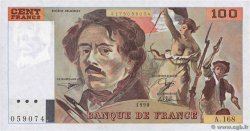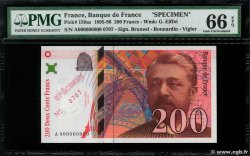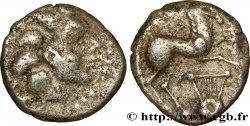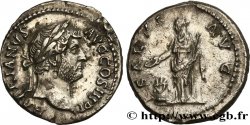v36_0155 - MYSIA – KYZIKOS / CYZICUS Tétradrachme
MONNAIES 36 (2008)
Starting price : 650.00 €
Estimate : 950.00 €
unsold lot
Starting price : 650.00 €
Estimate : 950.00 €
unsold lot
Type : Tétradrachme
Date: c. 190 AC.
Mint name / Town : Mysie, Cyzique
Metal : silver
Diameter : 30,5 mm
Orientation dies : 12 h.
Weight : 16,94 g.
Rarity : R2
Coments on the condition:
Exemplaire parfaitement centré des deux côtés. Portrait de toute beauté, bien venu à la frappe. Revers fantastique de haut relief et de style très fin. Patine grise superficielle avec des reflets mordorés
Catalogue references :
Predigree :
Cet exemplaire provient de la vente Gorny 67, 6 mai 1994, n° 66
Obverse
Obverse legend : ANÉPIGRAPHE.
Obverse description : Tête imberbe d'Alexandre le Grand sous les traits de Zeus-Ammon, cornu et diadémé à droite.
Reverse
Reverse description : Athéna nicéphore assise à gauche sur un trône, tenant une petite Niké de la main droite qui couronne le nom de Lysimaque et le coude gauche reposant sur un bouclier orné d'un masque de lion ; le trône est orné d’un rinceau ; dans le champ à gauche, un monogramme ; sous le bras d’Athéna, une couronne ; à l’exergue, un lagobolon.
Reverse legend : BASILEWS/ LUSIMACOU/ (Bsilews Lusimacou)
Reverse translation : (du roi Lysimaque).
Commentary
L’attribution à Cyzique est possible, à cause du symbole, placé à l’exergue du revers qui rappelle le flambeau placé dans la couronne du tétradrachme stéphanophore de la cité.
The attribution to Cyzicus is possible, because of the symbol, placed in the exergue of the reverse which recalls the torch placed in the crown of the stephanophore tetradrachm of the city
The attribution to Cyzicus is possible, because of the symbol, placed in the exergue of the reverse which recalls the torch placed in the crown of the stephanophore tetradrachm of the city








 Report a mistake
Report a mistake Print the page
Print the page Share my selection
Share my selection Ask a question
Ask a question Consign / sell
Consign / sell










